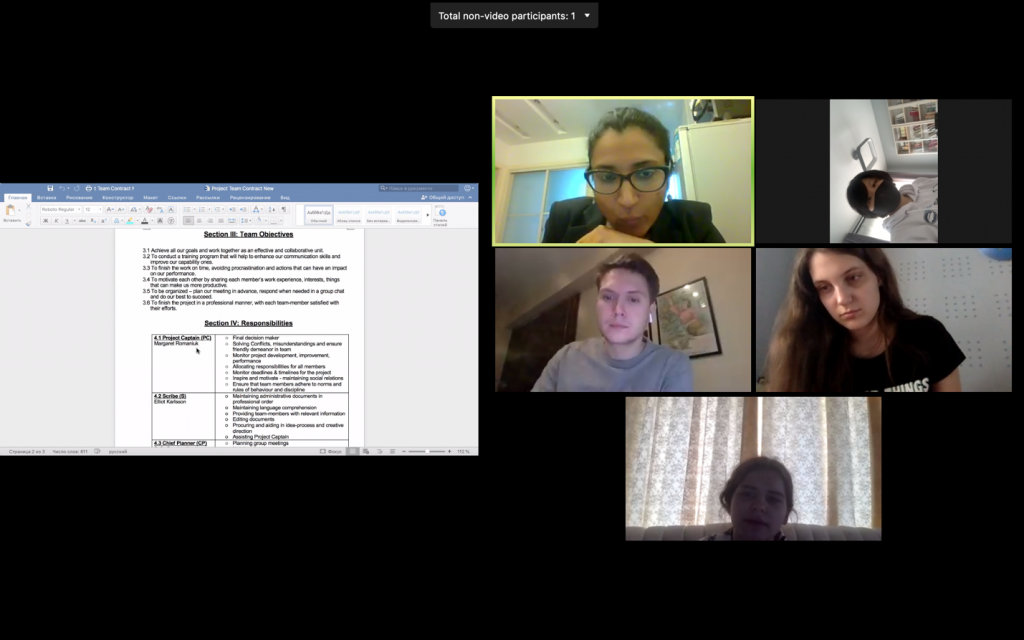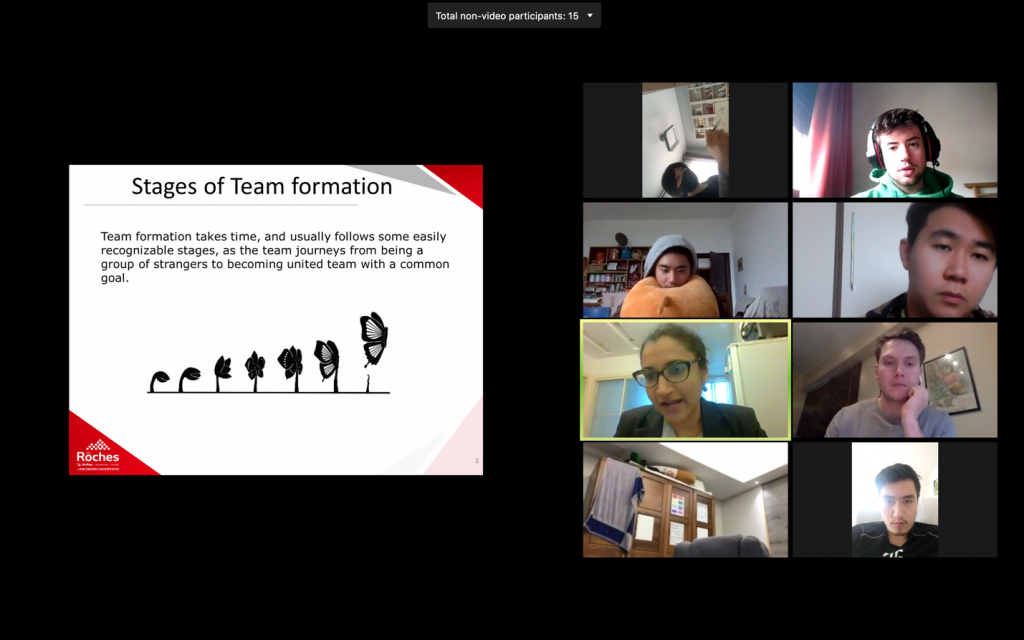E-learning: Making Successful Virtual Teams
With so many in the world forced to stay at home amidst varying degrees of quarantine and social distancing methods, the ability to connect, engage, and collaborate with others online has never been as appreciated.
As schools everywhere, including our own, shift gears and move towards online learning as the new normal, students, and teachers alike, are adapting to the use of online collaboration tools and techniques at an accelerated capacity.
In this article, we take notes from lecturer Priyanka Das’ Leading Teams to Success class on how to create successful teams virtually, while Les Roches Jin Jiang students weigh in on their own experiences.
A project-heavy semester
Les Roches’ HM4 students, like the ones featured here, are faced with an extraordinary semester. Fresh off the heels of their last internships, what was supposed to be a tranquil return to school academics has turned into a whirlwind of sorts—from finding their respective ways back home to navigating time zone differences to effectively collaborate with their peers and classmates.
As a semester that is heavily peppered with group projects, some of which are “significantly bigger and more complex than the other semesters, HM4 requires much more contribution, time-wise, than before,” notes Tarlan, a student from Russia.

HM4 students are currently working on a number of projects virtually, as the school conducts classes online. Teams like this one meet virtually to discuss their team objectives and responsibilities.
As Miss Das points out, “the HM4 & PGD programs introduce several group projects that use real-world challenges to deepen student’s understanding of an issue, concept or theory. Not only does this prompt more student engagement with a particular topic, but it also strengthens the student’s general approach to problem-solving and collaborative work.”
On choosing teammates and managing miscommunications
Given the virtual setting of their classes, Tarlan mentions how group selection is essential, and how his current experience in his course involves being in groups with people from his time zone.

Current students of the Leading Teams to Success course are finding themselves applying their lessons onto a more challenging, virtual environment.
Citing time differences and internet connectivity issues, he notes miscommunication as one of his team’s biggest challenges. To accommodate each other’s specific needs, his team has made a habit of preparing discussion points beforehand to “respect everyone’s personal time and be productive during meetings”.
With internet connectivity being an issue pointed out by Tarlan and his classmates Sofia and Lydia, unintentional interruptions during video calls cause disruption and unwanted arguments. To mitigate potential communication misfires, Tarlan recommends virtual teams to create a code that allows members of the team to respectfully chime in with their opinions instead of “just jumping into conversation”.
Collaboration tools
In enabling focused, effective virtual teamwork, Lydia, a student currently working from her home in Singapore, mentions how she realized the importance of having collaborative tools like Google Docs to work on.
By letting all team members see the progress of a project, she notes how her team has become more organized, resourceful, and adept at communication. She also says that while these skills are not new to them, it is “something that we are all focusing on.”

Lydia (top right) uses Zoom to meet with her teammates.
Priyanka Das notes the importance of collaboration tools, “the right tools for small group collaboration is crucial for facilitating easy communication between small groups of students and instructors — no one benefits from a clunky platform that frustrates students and inhibits smooth peer-to-peer communications.” Find her list of recommended collaboration tools here.
Ensuring productive collaboration
On top of using effective collaboration tools, Tarlan’s team has simple, but foolproof ways to ensure they are on top of their deliverables. First, they “divide projects into small parts and create deadlines for each part in order to be more organized and finish work on time”.
In brainstorming the best way to create a 35-minute team presentation for a class, he says his team “got stressed of how to do it during a Zoommeeting”. They decided to simplify the process and came up with idea of recording their individual speeches on video in order to avoid network interruption.
The future of learning is now
Despite her preference forin-classroom learning, Sofia from Ukraine agrees that the as an appropriate learning method given the situation in the world, working with teams online has helped her communicate more effectively and be more organized.
From an instructor’s perspective, Miss Das sees the value of online learning in teams, as it allows students to “take more ownership of their successes and failures.” She adds, “while there will always be free-ridersand social loafers, they are no different than in a traditional brick and mortar classroom set-up.”
Bringing it to the real world
As the dust settles in the wake of a worldpost-Covid 19, there is no doubt that virtual learning and collaboration, more than ever, will be an integral part of everyone’s professional life.
For students like Tarlan, Lydia, and Sofia whoare digital natives, the ability to use and navigate virtual tools and networks is instinctive. The challenge, therefore, is how to enable them to use tools to their career advantage. Miss Das notes, “by working on projects that require virtual teamwork, students learn career skills such as collaborating and communicating effectively through diverse cultures, problem solving, learning to appropriately navigate the online business world, and negotiating online.”


